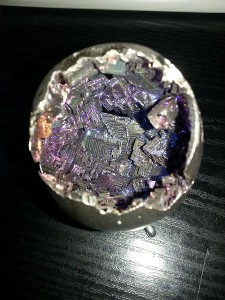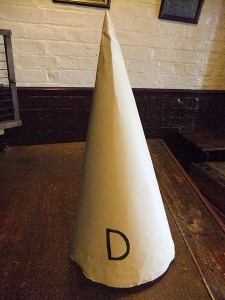I’d quite like to write a book entitled ‘Advice to a young advocate’ which would give tips on how to influence the political system. I’d not be the right person to write all of it so I’d need a few co-authors too – I wonder what Tony Juniper would think of the idea.

Here are a couple of lessons which I think I learned. I know there has been quite a lot about killing things on this blog recently, it’s not a fixation with the subject just the way things have gone, and I’m afraid I will use a few examples from those areas to illustrate my points here.
1. Political pain
There are times to be nice and times to be firm. If you are firm then people sometimes think you are being nasty. Politicians want to be liked and there are lots of people encouraging them to do things. If you want them to do something and they don’t then you should think about punishing them. Not by beating them up but by criticising them. Politicians, but also organisations like NGOs, and even you, and even I, don’t like too much criticism. Of course, the impact of criticism varies in relation to who does the criticising. If you are a single voter then your criticism of the government doesn’t carry much weight – although if, as I do, you live in a marginal constituency then anything you do carries a bit more weight. But if you are an NGO with a large membership then association with you is craved by politicians (see yesterday’s blog) and even the faintest whiff of censure is noticed. You have to use that power wisely, but you have to use it sometimes otherwise you are seen as weak and a push-over.
When I criticised the RSPB over vicarious liability in this blog on Monday (in a pretty mild way) that was what I was doing – using my rather limited influence to make a point (whether it made any difference or not, I don’t know). The RSPB can rely on my almost universal support but there are going to be times when we don’t agree, and that’s fine, but I’m still an advocate and I’m still advocating. When, in response, ‘Linnet’ criticised me for doing that (see comments on Monday’s blog) it made me think (but no, in this case, it didn’t change my mind at all – but it made me think). And when the RSPB occasionally gets out of its pram then it will make others think too. I’m looking forward to the next outing from the pram.
2. Who to believe?
As an advocate you will often be talking about things about which you are not expert. I’ve done it for years and I’m doing it still. There are subjects on which I am expert, and there are others where I know a lot more about them than the average person, but in most areas there are lots of people who know more about the subject than I do. Let’s take lead poisoning and lead in food – I know more about these issues than most people would want to know, but far far less than some people know. About guns and ballistics – I know practically nothing.
And so, you have to get used to being told that you are wrong and coping with it. I am rarely told that I am wrong about birds (even when I am – it happens) because most people think I know what I am talking about (and, generally, I do).

That was just a conversation on a social media site where you might not expect complete accuracy. When I read the BASC statement on the FSA advice I was struck, as I’m sure some of you were, by the statement that chocolate contains more lead (per g) than does game meat. Crikey!, I thought, Does it? And then I thought, They must have checked their facts, surely? And then I thought, Well maybe they have but maybe they haven’t, so I will.

The information in that table is not for game meat it is for all meat – and that will include all domestic meat, as I understand it, from cattle, pigs etc and is not therefore a measure of lead in game meat that has been shot with lead! So BASC’s striking statement is wholly false. As far as I can see it is complete and utter nonsense and yet it was BASC’s response to updated health advice from the FSA. BASC’s chocolate health scare holds as much water as a chocolate teapot.
In any case, let’s look at the most up to date, as far as I know, EFSA report on lead – one published earlier this year. That helpfully tabulates how much lead there is in chocolate (Table 12 of EFSA report) and we find an amount of about 55 ppb (parts per billion). Eeeeeeeek! Fifty-five is quite a big number, although parts per billion sounds very small. What does it mean? (There is one type of chocolate with even higher lead levels although it doesn’t sound like the type of chocolate I eat very much.)
Let’s have a look at meats such as beef, chicken and pork. Their ranges of lead levels, in ppb, are really quite low (which might partly be because in many countries lead levels are regulated in domestic livestock meat because lead is a poison) at around 15 ppb (Table 8 of the same report). Maybe BASC is right (by accident) – maybe chocolate is lead-heavy.
But hang on one moment, let’s see how game meat measures up, shall we? Remember, chocolate is around 55 ppb and pork, beef, lamb, chicken etc you can buy in supermarkets and butchers is around 15 ppb. Game meat from mammals (deer, wild boar, rabbits etc) is around 966 ppb (same Table 8 of the European Food Safety Authority report) and gamebird meat is around 260 ppb of lead.
If your portion sizes are similar you get about 60 times as much lead per mouthful of game mammal as you would if you stuck to beef, pork etc and you get around 17 times as much lead in a mouthful of grouse, pheasant, partridge etc as you do in one of chicken, turkey etc. I’ve given you the references so check it yourself and if I have interpreted it wrongly then you can correct me.
All of the above is based on European Food Standards Authority reports which are publicly available. They are a bit heavy going, and it helps if you have a scientific background but the data are from across Europe. If one looks at the lead levels measured by the Veterinary Medicines Directorate and by WWT and RSPB then those high lead levels are replicated in UK studies. A few partridges bought and cooked normally (with the lead shot removed before ‘eating’ or, actually, analysis) would deliver to you doses of lead of over 10,000 ppb (see Table 3 in this study).
I wouldn’t swap your Mars bar for a leg of pheasant just yet even though BASC seem to think that this would be a good idea.
And let me stress again, for it seems to be forgotten by some, that the health issues concerning lead levels in game are most relevant to those who eat game frequently (and I have become increasingly aware this last few days how high some of those intakes must be) and those most vulnerable (infants and pregnant women). Gamekeepers’ families might qualify – exactly the type of people whom the Countryside Alliance, BASC and GWCT should be thinking about, I would have thought.

Game meat, shot with lead, has high lead concentrations. High lead concentrations have health impacts if you eat lots of game meat. That’s why the FSA issued the guidance that they did this week.
I am trying very hard not to be anti-shooting. I really don’t mind people shooting things, cleanly, even for fun, in a sustainable way. But there is an awfully bad smell coming from the shooting community at the moment.
[registration_form]
Mark, thank you for such an illuminating blog regarding lead in game. I had absolutely no idea and as someone who enjoys eating game (which is locally sourced from various butchers around the Hamble and riddled with shot) I am shocked!
Lucy – welcome and thank you!
A proper eye opener – thanks Mark. I am still a great “advocate” of the shooting set being obliged to put their own house in order. A deadline for removal of lead ammunition against threat of license suspension, but I suspect Government would not take this path because of lobbying by “influentual” shooters!
John – welcome and thank you for your comment.
Congratulations Mark on your analysis in the “who to believe” section above. This is a masterclass in how to approach “facts” that are presented to us daily in the press and elsewhere and which, in general, are accepted by the majority of the population as correct. Few of us would have the tenacity, expertise or even time to undertake the analysis you carried out in this case.
We should all say “Crikey! Does it! Surely they’ve checked the facts”.
Great blog. Just going to check in FFB pp247-248, 283.
Richard – you are very kind. Thank you.
“This is a masterclass in how to approach “facts” that are presented to us daily in the press and elsewhere and which, in general, are accepted by the majority of the population as correct”.
Well said, Sir.
I was a student of a Very Wise Man, Dr Walter Heydecker. One of his favourite lines was “Is zis true?”, and a frequent task was for his students to critique the conclusions of a paper against its results. In this respect he taught us to be true sceptics. Particularly in the right and wrong ways to grow carrots.
It is common for sceptics to get a Bad Press – although, like cynics, they often know what is really going on. Unlike zealots, who often will pursue a cause without question. But – to be a Sceptic First Class, with Honours, scepticism must be consistently applied.
A bit late in the day to comment – I have been watching kites, from above, at Caio, and eating rabbit pie …
Excuse a second comment today. I’ve just received an email from the campaigning blog 38degrees. Two of the high profile campaigns they may highlight are about lead in game and shooting badgers. Like the RSPB they have over a million followers and can have an influence on government. Here is alink to their poll; http://www.38degrees.org.uk/page/s/member-poll-oct-2012
I selected “tell the government to phase out the use of pesticides that are most harmful to bees” and I hope others do the same.
Although the use of lead amunition and the mass culling of badgers are important issues, and well done to Mark for highlighting the former, but surely the use of neonicotinoids in agriculture is a far more serious environmental issue ?
The issue was well covered in MA Guest Blog on the 9th July:
https://markavery.info/2012/07/09/guest-blog-neonicotinoid-pesticides-responsible-demise-bees-wildlife-rosemary-mason-derek-thomas/
Mark, With a sense of utter frustration I am taking this opportunity to advise your followers of todays reported disappearance of ‘Barry’ the last of two satellite tagged hen harrier chicks from this year’s brood of two at Langholm. Barry’s sibling Blae was found dead on a grouse moor at Tweeddale on 6 October.
Additional hen harrier losses have now been published here: http://raptorpolitics.org.uk/2012/10/10/we-now-need-to-be-told-the-truth-just-where-are-all-the-satellite-tagged-hen-harrier-now/#comment-11423
Terry – thank you. It keeps getting worse and worse doesn’t it?
Have struggled to find the words to sum up my feelings whilst not writing anything libellous! It’s the pits, but wholly unsurprising.
Mark, I have been trying my best to protect raptors in the north west of England for well over 45 years now. I have to say in all honesty, these issues are becoming much worst rather than better in the northern uplands of England, including other regions of our country. I know many well meaning individuals have put their all into trying their best to conserve and protect these iconic birds but for every step we take forward we seem to go back another three. It saddens me to say this but the hen harrier is finished in England and the reasons have been clear to me for many years, the hen harrier will never be accepted on red grouse moorlands.
Perhaps it could be suggested to 38degrees that they support a campaign for the introduction of Vicarious Liability, hopefully more of their one million supporters would support it than the RSPB membership has!
Joe W, I voted for that one as well.
Mark I too can’t wait for RSPB to “weigh in” properly over the issue of raptor persecution – especially Hen Harriers. I have told them what I think and received a prompt reply – I suspect they have a series of standard emails that they trot out as necessary. They did not really respond to my accusation that they were “pussyfooting” around the Hen Harrier issue in general and vicarious liaibility in particular.
Perhaps the RSPB would take more notice of their ex-Conservation Director; maybe it is “time to be firm”. I find their apparent lack of enthusiasm to depart from the pram on this issue a little more than just “a shame”
I believe that the RSPB is very active in it’s fight against wildlife crime and Martin Harper made it very clear at the RSPB AGM last Saturday. His blog from Oct 5th may reassure some members. Perhaps it’s the members themselves who need to get out of the pram and vote!
Here is Martin’s link:
http://www.rspb.org.uk/community/ourwork/b/martinharper/archive/2012/10/05/birdcrime.aspx
No sign of a retraction from BASC press release yet I see. George Monbiot howitzer called for?
I have to confess when it comes to the issue of lead shot in game my knowledge is seriously lacking. I have to scour every table three or four times and the figures can still confuse. But one thing I just don’t understand is this, when I was a kid I would often go fishing with my mates, at the time we used lead weights. Then a fishing magazine started to say about how lead weights were a potential danger to birds such as Swans and other wildfowl. There were a few “oldies” who moaned via the letter section, but as a whole every angler (that I knew) simply took it as fact, no hissy fits and throwing of toys out of the pram and an alternative was found and widley used my the majority. I SIMPLY DON’T UNDERSTAND why the shooting fraternity can’t do the same. If they believe all the data to be false, then perhaps they should petiton the government to do an impartial scientific study to finally put to bed any arguments going back and forth. For some reason the shooters seem to think it’s an attack on their hobby, but can’t they see it’s simply a case of protecting the health of anyone who eats game meat. After all this country doen’t have a great reputation when it comes to food standards (mad cow disease etc).
If lead is removed from the equation then the real winners will be the shooters, eg if lead is removed people will have more faith in game meat being safe to eat, and if the birds that aren’t shot and survive then the digestion of lead would’ve have stopped equalling less birds dying meaning more birds for them too shoot, the only losers in the arguement is the game bird itself 🙂
I agree to some extent Richard but are the RSPB getting their message across to their 1.1 million members? Only 10,441 signatures on the VR petition which the RSPB supports!
If this went over the 100,000 it could be used as evidence to the Law Commission that action is expected on the issue of raptor persecution.
Richard Ebbs,sorry but this will sound rude but your comment just highlights the pathetic stance of the top people at the RSPB including your named person.
The latest edition of RSPB Birds came with a four page separate flyer begging for help against killing birds in Malta,now as important as this is it certainly cannot be more important than the Hen Harrier situation in England and they have totally ignored requests to put a flyer in with Birds for Hen Harriers.There is absolutely no doubt that had they put their weight behind the V L petition it would easily achieved the 100,000 signatures.Fact is badgers,bugs and anything else you can think of that may bring in a few more members seem more important than H H.
Dennis – you do feel very strongly about this don’t you.
“bring in a few more members”
The membership door swings both ways.
Filbert – it does
More feel really let down,how I read correspondence from Mike Clarke and comments from Martin to myself they were going to put some effort into the petition so either I got the wrong end of the stick or they have let me down.Whatever they have definitely let the H H down which is the important bit.Strange we have RSPB employees putting links on RSPB forum to a press release or suchlike that contains innacuracies,it would have been really nice to have seen a link to the V L petition just as prominently.
Dennis – NGOs are like close friends – you sometimes fall out but you like each other really. No-one’s perfect and no NGO will be perfect for all its members. But I ado feel the same as you on this one (although not as strongly I think).
Think I feel exactly like you Mark,lots of organisations,especially I think the RSPB do great jobs 99% of the time and I suppose in this instance they cannot please me.
I could chip in an insider perspective to your compendium. Though your Fighting for Birds chapter was pretty spot on. Having watched in a number of different spheres, a key point is to keep within the envelope of possible political action. The disability lobby is pretty good at this, but some are better than others and it is they who get the better results for those on whose behalf they lobby.(Generally, it is they, too, who are better at marshalling robust evidence.)
I have also seen a very powerful example of another lobby, previously disparate and sometimes squabblesome, agreeing with great effect to present a united front to Government.
The RSPB has been a leading light in advocacy not just because of membership numbers and good science (crucial as those are) but because it has understood the bounds of the possible, sometimes to the chagrin of more fiery (but potentially less effective) spirits.
The difficulty now is that the envelope is increasingly so obviously in the wrong place: as much because of ever more evidence as because of the present government. Is there is any way advocacy can move it to a better place (other than finding a new messiah). I don’t know the answer, but I detect a new willingness to step outside the box (or the envelope) in the RSPB’s new strategy? A willingness to try to change the terms of the debate? Must be good.
Alan – great comment, thanks very much.
As an RSPB member, and previous staff member, I just wanted to highlight the fact that campaigning work isn’t the only work the RSPB does (or can do) for hen harriers. The Skydancer Project, started back in October 2011, is a four year project with dedicated staff working on the ground in local areas where hen harriers historically bred and working within the shooting community to change hearts and minds as well as providing strategic protection for any nest sites that occur (sadly unneeded at almost all sites this year).
Having worked closely on occasion with this project I think it’s fantastic that staff are going into schools, game keeper colleges and other local groups to talk about the issues and facts concerning hen harriers. At a Game Fair in the North West I was impressed not only by the patience and restraint of staff when faced with the occasional angry man in tweed shouting red faced but also the understanding and sadness of many in the shooting community that these birds are being lost. Of course, these may have just been those people who are supportive of hen harriers but it’s still nice to see there are many good apples left in the shooting barrel that haven’t turned rotten. For more info on the project see http://www.rspb.org.uk/skydancer/about.aspx
Campaigning is vital to protect these birds and more needs to be done but it’s important not to forget that the RSPB isn’t just a campaigning organisation, a huge part of their work is getting stuff done on the ground, sometimes quietly, and making the changes needed.
There’s also the Skydancer Blog which is a great place to find out about the projects work.